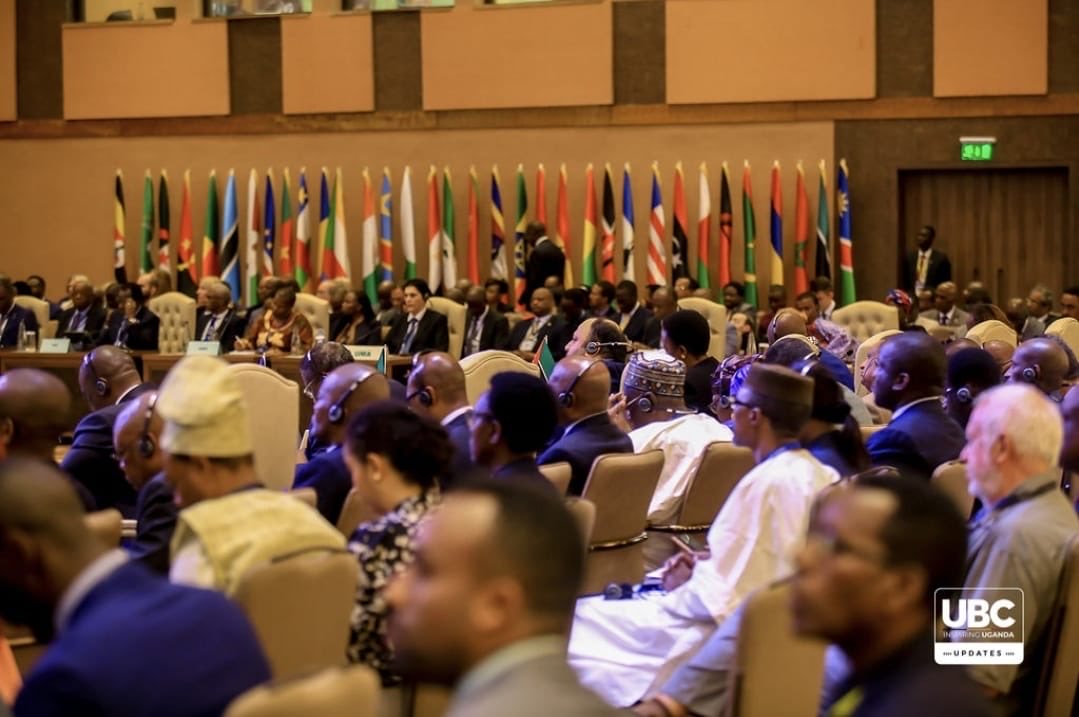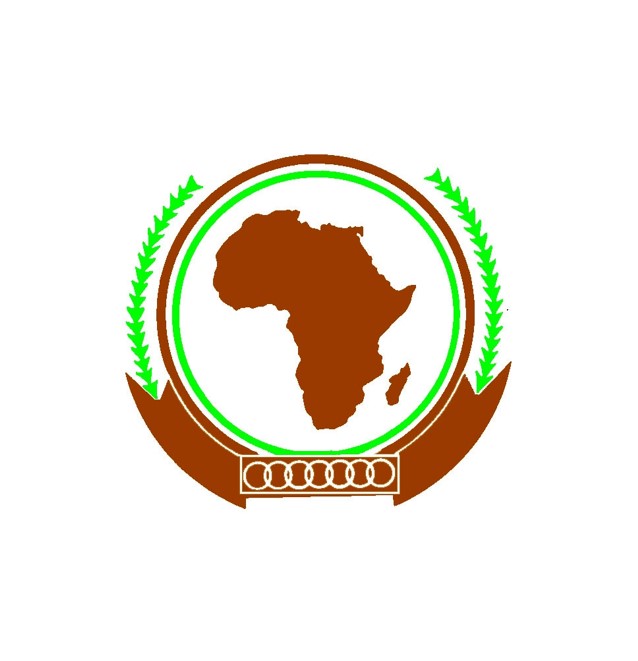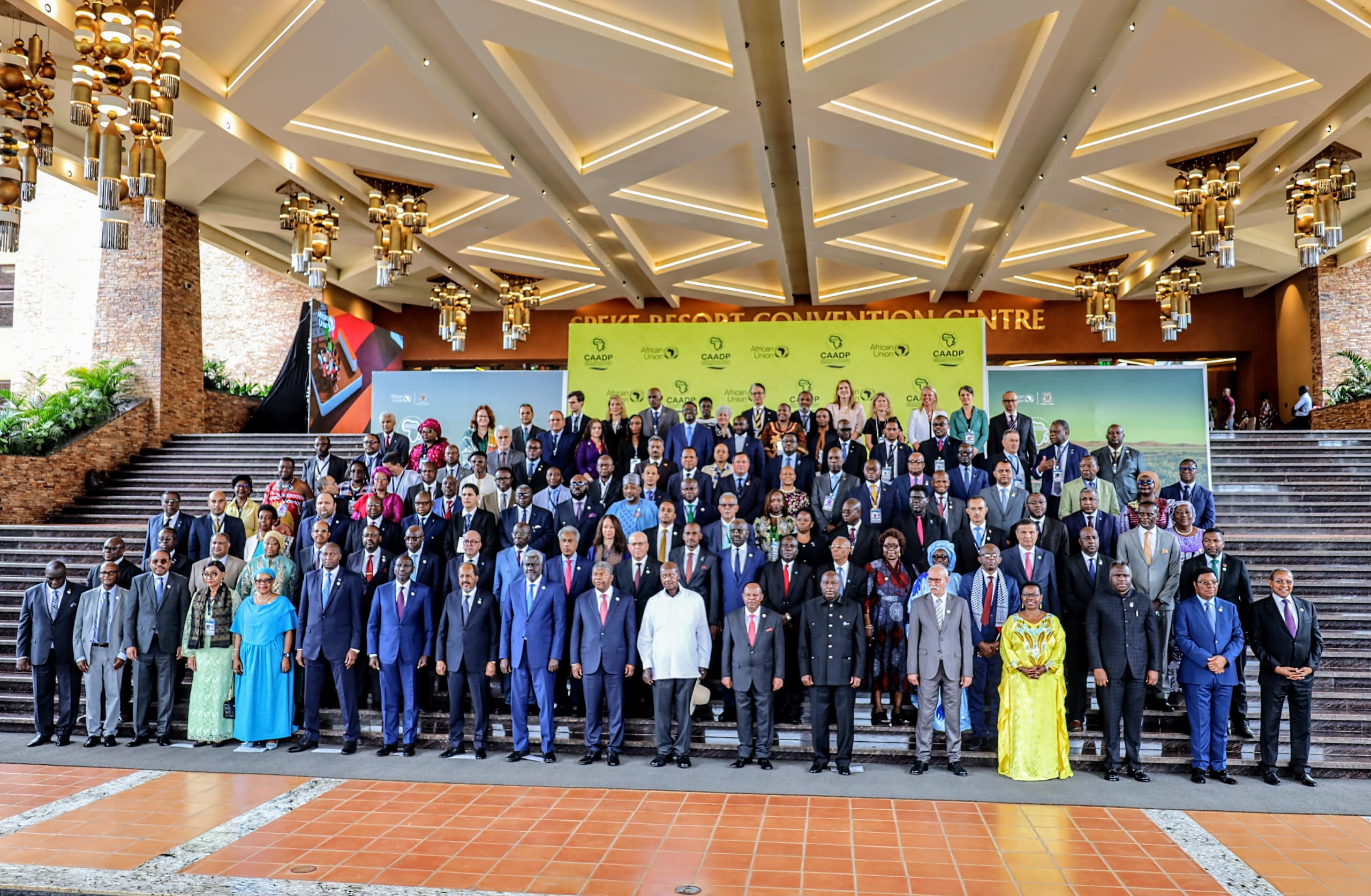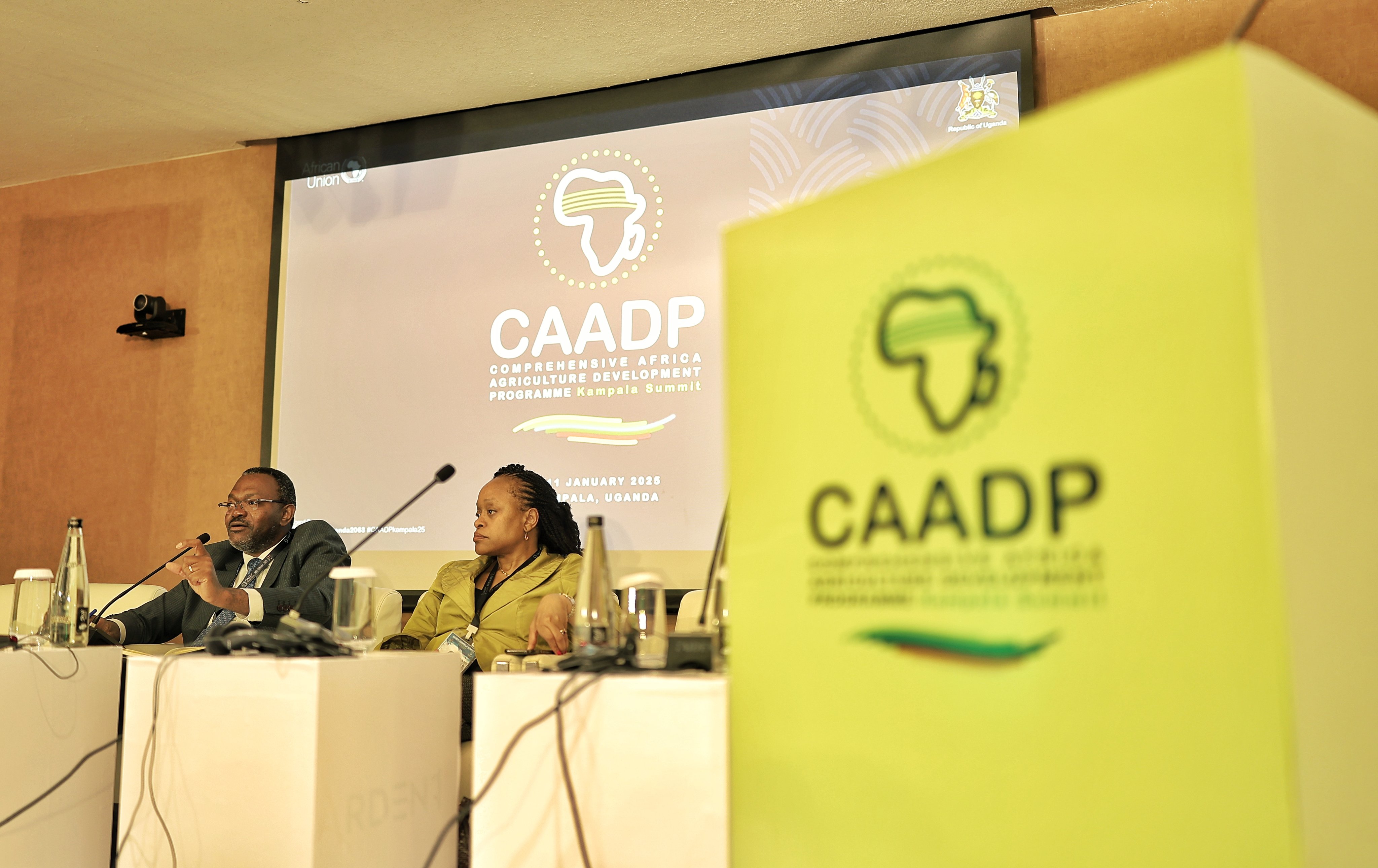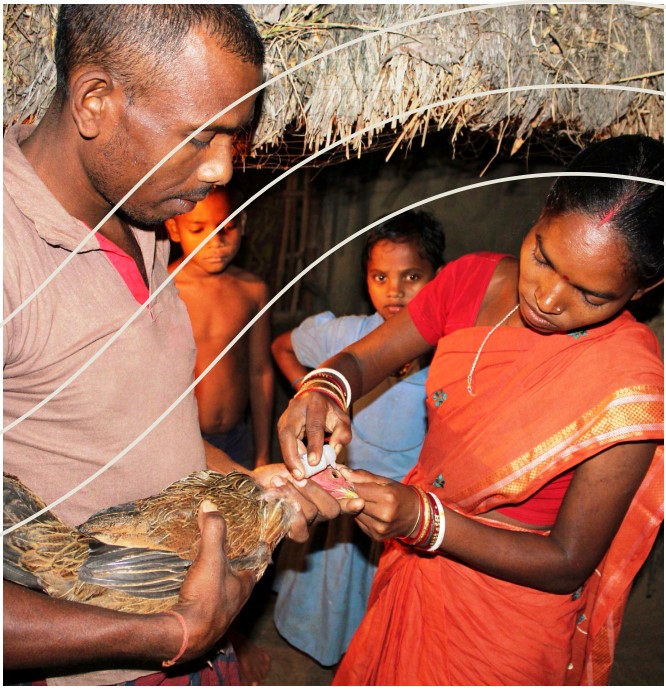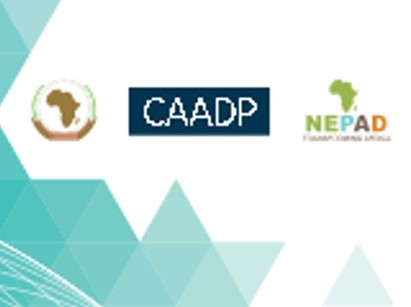
In July 2003, during the Second Ordinary Session of the AU Assembly in Maputo, Mozambique, African Heads of State and Government adopted the Maputo Declaration on Agriculture and Food Security in Africa. This Declaration marked the official launch of the Comprehensive Africa Agriculture Development Programme (or CAADP).
This was followed in June 2014 by the Malabo Declaration on Accelerated Agricultural Growth and Transformation for Shared Prosperity and Improved Livelihoods. Building on the momentum from the Maputo Declaration, the 2014 Malabo Declaration renewed the commitment to CAADP and set ambitious goals for 2025, including increasing finance and investment in agriculture, eradicating hunger, halving poverty rates, reducing malnutrition, tripling intra-African trade, and building resilience of livelihoods and production systems.
The Extraordinary AU Summit on Post-Malabo CAADP, held in Kampala, Uganda from 9 to 11 January 2025 aims to chart a new path for Africa’s food systems. Based on the third iteration of the CAADP for the decade 2026 – 2035, the Kampala Declaration, which comes into force on 1 January 2026, stresses the commitment of the African Heads of State and Governments to Intensify Sustainable Food Production, Agro-Industrialization, and Trade, to Boost Investment and Financing for Accelerated Agrifood Systems Transformation, to Ensure Food and Nutrition Security, to Advancing Inclusivity and Equitable Livelihoods, to Building Resilient Agrifood Systems and to Strengthening Agrifood Systems Governance.
The new CAADP Strategy and Action Plan 2026 – 2035 is highly relevant to animal health and welfare.
Indeed, whilst Africa has witnessed significant economic and agricultural growth over the past two decades 2000-2021, with its gross domestic product (GDP) doubling from 2000 to 2021 and its agricultural sector becoming the fastest-growing globally, challenges persist, particularly in meeting the ambitious goals and targets in the Malabo Declaration on the Comprehensive Africa Agriculture Development Programme (CAADP), adopted in 2013 in the capital of Equatorial Guinea, Malabo. As of 2023 no African Union (AU) Member State was on track to meet the Malabo Declaration targets by 2025. This (internal) observation is consistent with findings of the 2024 State of Food Security and Nutrition in the World report (SOFI, 2024). With 20 % of Africa’s population experiencing hunger and 58 % facing food insecurity, the continent is struggling to meet basic food and nutrition security needs. Rising costs have made a healthy diet unaffordable for 924.8 million people, exacerbating food insecurity and malnutrition on the continent. Concurrently, obesity and related health issues are becoming more prevalent, adding to the continent’s economic and health burden. While land and labor productivity have grown steadily and rapidly over the last two decades, land expansion is still a major driver of agricultural growth. The sector, which largely relies on smallholder farming, faces issues such as insecure land tenure, limited investment in soil health, and high levels of land degradation.
Public commitment to invest in agriculture has been below expectation and inadequate. Only a few countries are on track to meet the goal of annually allocating 10 % of public expenditure to agriculture, as agreed in Maputo in 2003.
On the positive side, 31 countries developed National Agricultural Investment Plans (NAIPs), four regional plans were finalized, and 28 countries completed the CAADP process and mobilised resources to implement their NAIPs.
While the current agenda primarily focused on agriculture, livestock, forestry, and fisheries, it also acknowledged that the COVID-19 pandemic, wars and conflicts on the continent, the Russia-Ukraine conflict, and negative climate change impacts and corruption have significantly disrupted Africa’s agricultural sector. These challenges underscored the necessity of a new CAADP agenda beyond 2025 for Africa’s agrifood systems transformation.
The post-Malabo CAADP agenda is designed to build upon the achievements of the Maputo and Malabo CAADP phases. The new Strategy emphasises environmental sustainability to safeguard future food production and tackles malnutrition in all its forms (undernutrition, and micronutrient deficiencies) by promoting diverse, nutritious and affordable diets. It also supports economic inclusion, benefiting about 70 % of the continent’s population that relies on agriculture. Strengthening market access and regional trade, notably through the Africa Continental Free Trade Area and Agreement (AfCFTA), has the potential to boost significantly intra-African agricultural trade by 2035.
CAADPs vision is “Sustainable and Resilient Agrifood Systems for a Healthy and Prosperous Africa” This CAADP vision is consistent with Agenda 2063 towards ‘the Africa We Want’.
A significant shift in the new CAADP Strategy and Action Plan (2026-2035), is the move from a narrow focus on agriculture-led growth to a broader agrifood systems approach. Africa’s agrifood systems are undergoing transformative changes influenced by numerous economic, demographic, environmental, climate, and technological factors.
Indeed, urban lifestyles that prioritize time efficiency have resulted in an uptake in the consumption of ready-to-eat meals and foods prepared away from home, thereby lengthening of agrifood value chains. A burgeoning middle class benefits from more disposable income, driving demand for diverse and high-quality food products, including meat, fish and fish products, dairy, and processed foods. Also, projections indicate that Africa’s population will double by 2050, reaching approximately 2.5 billion people.
This growth will increase the demand for food. Innovations such as digital agriculture, biotechnology, innovative early warning systems and digital platforms for production and health issues, and precision farming can enhance productivity, sustainability, and inclusivity. The widespread adoption of mobile phones, mobile money and digital tools is accelerating access to information, financial services, and markets for farmers. Climate change poses a formidable threat to agricultural productivity. Variations in precipitation, rising temperatures, and extreme weather events adversely affect crop yields and food security. In this respect, efficient water management practices, such as the adoption of drip irrigation, rainwater harvesting, and water recycling, are essential for maintaining agricultural productivity.
In addition, there is a growing recognition and call for more support for women’s engagement in agriculture. Also, Africa has a large youth population which continues to grow. This rich youth capital presents a significant opportunity for agricultural and food systems growth, innovation and sustainability. Engaging youth in agriculture is vital for the sector’s future, in part because young people can drive the adoption of new technologies, modern farming techniques, and innovative business models. Finally, trade policies and regional integration, especially through the African Continental Free Trade Area (AfCFTA), are crucial for transforming Africa’s agrifood systems. The AfCFTA promotes intra-African trade by lowering tariffs, removing trade barriers, and harmonizing standards.
Important, from an animal health and public perspective, the Strategy acknowledges that as incomes in Africa rise and urbanization advances, the demand for processed foods, including meat and dairy products, is increasing. Although there is a correlation between the consumption of fatty meat and the development of cardiovascular disease, current research indicates that the risks are more closely associated with the types of fats consumed rather than the meat and dairy products themselves, which are essential for improving child nutrition
Picture (c) Communication (IFAD) 2025 III Photo (c) Communication (FIDA) 2025
Strategic Objective 1: Intensifying sustainable food production, agro-industrialization, and trade.
The target for this strategic objective is to increase agrifood output by 45% by the end of 2035 through the adoption of sustainable agricultural practices to meet the growing Africa food requirements and global trade opportunities, reduce post-harvest losses by 50%, triple intra-African trade in agrifood products and inputs by 2035 in line with the AfCFTA, and increase the share of locally processed food to 35% of agrifood GDP by 2035.
Under (8) Trade enhancement, it aims to Strengthen market access and trade facilitation. Key action areas include – amongst others –
Strategic Objective 2: Boosting Investment and Financing for Accelerated Agrifood Systems Transformation
The target for this strategic objective is to mobilize a total of USD 100 billion in public and private investment in African Agrifood systems by 2035, while ensuring that at least 10% of annual public expenditure is allocated to agrifood systems and that at least 15% of Agrifood GDP is reinvested annually in the sector.
Under (1) Improve the quality of public and private sector investments, it aims to Establish effective public-private-partnerships for sector investments.
Strategic Objective 3: Ensuring Food and Nutrition Security
This strategic objective aims to achieve to achieve zero hunger in all African Union Member States by 2035 and to reduce stunting by 25%, wasting by 25% and overweight by 25%, ensure that 60% of the population can afford a healthy diet. This entails Strengthening sanitary and phytosanitary standards (SPS) and one-health protocols and enhance the capacity of smallholder farmers and small and medium-sised enterprises (SMEs) to comply with the relevant standards, including the WOAH standards on animal health and welfare.
Under (3) Strengthen SPS standards and One Health protocols, the Strategy aims to address -amongst others – the following important animal health and public health (food safety and One Health) welfare issues :
Strategic Objective 4: Advancing Inclusivity and Equitable Livelihoods
The target for this strategic objective is to reduce the number of people living in extreme poverty by 50%, to reduce the yield gap between men and women farmers by 50%, and to empower at least 30% of women, 30% youth and 30% marginalized groups in agrifood value chains by 2035.
The Strategy underscores the need to improve access to productive resources for marginalized groups, including women, youth, smallholder farmers, fisherfolk, and pastoralists (nomadic livestock farmers). It addresses the inequality and power imbalances that constrain women, youth (both young women and men), and other marginalized groups. These inequities are exacerbated as they are disproportionately affected by climate extremes, disasters, conflict, economic slowdowns and downturns, and the unaffordability of healthy diets.
Partial overview of the participants. Picture (c) Ugandan Broadcasting Corporation (UBC) 2025 III Vue partielle des participants. Photo (c) Ugandan Broadcasting Corporation (UBC) 2025
Family photo of the high-level guests. Picture (c) MAAIF (Uganda) 2025 III Photo de famille des invités de marque. Photo (c) MAAIF (Ouganda) 2025
Strategic Objective 5: Building Resilient Agrifood Systems
As Africa’s agrifood systems are under severe strain from a complex interplay of climatic, environmental, socio-economic, political, technological, and health-related challenges, the target for this strategic objective is to ensure that Africa’s Agrifood systems are resilient to climate, socio-economic, and environmental shocks. By 2035, at least 30% of agricultural land should be under sustainable management and 40% of households protected from shocks by 2035.
Under (1) Invest in human and bio-physical capabilities, the Strategy aims – amongst others – to
The former may fit with WOAH’s work (as well as that of others) on workforce development and specifically the new guidelines on Community-based Animal Health Workers (CAHWs).
In addition (3) Promote adaptation within agrifood systems and livelihoods to reduce vulnerability to major shocks and stressors includes :
Strategic Objective 6: Strengthening Agrifood Systems Governance
This strategic objective aims to ensure that by 2028, all African Union Member States and Regional Economic Communities (RECs) integrate the Kampala CAADP Declaration into their national and regional Agrifood systems investment plans and adopt best practices in Agrifood systems governance based on CAADP principles. In addition, by 2030, all countries will integrate the CAADP biennial review process into their national joint sectoral review platforms for agriculture.
In the accompanying annex that sets out the contributions of the various AU, regional and international instruments, WOAH is mentioned as a contributor to the Enhancement of the capacity of enterprises and entrepreneurs (with a focus on SMEs, and women/youth-led enterprises) to comply with mandatory and voluntary sustainability requirements, as well as (arguably, as a technical and financial partner of the AU) to : Strengthen SPS standards and One Health approach and : Improve animal health and welfare to ensure food safety and security, and public health. In addition, WOAH may be implicated in other objectives, such as : pollination services, feed and fodder systems, pastoral and aquaculture production systems, and many more (governance, policies, resilience,…).
.
Given the slow pace of implementing the Malabo CAADP Declaration, the Strategy emphasises strengthening institutional and human capacity, fostering public-private partnerships, enhancing data and information systems, and promoting regional cooperation to strengthen implementation and coordination. As public funding for agriculture often falls short of the 10 % target, the AU will encourage Member States to increase investments in agrifood systems transformation. Also, the AU will work with development partners – including WOAH – to create tailored programmes that build institutional capacity, provide technical assistance, and enhance the operational efficiency of Member States, AUC, AUDA-NEPAD, and RECs.
Disclaimer :
This article and its links and downloadable documents represent a summary and critical review of a third-party document (African Union) and does not necessarily imply endorsement or agreement of its contents by the World Organisation for Animal Health.
